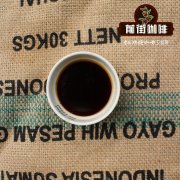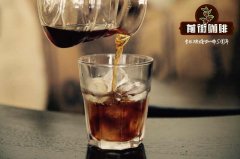What are the benefits of coffee beans in the sun? What are the ways of drying raw coffee beans in addition to the sun?

Professional coffee knowledge exchange more coffee bean information please follow the coffee workshop (Wechat official account cafe_style)
What are the benefits of coffee beans in the sun? What are the ways of drying raw coffee beans in addition to the sun?
The requirements of the sun treatment on the climate are very high. After the coffee fruit is harvested and dried in the sun directly, the coffee fruit will be dried in the sun for 3 weeks according to the weather conditions, and then the pulp will be completely removed by peeling machine, and then screened and graded. Sun-cured coffee beans have multiple and thick flavors, but their quality is unstable. Therefore, some people do not like it, but others like this flavor, can only be said to have their own preferences.
These painstaking steps and processes are used to be called "processing process". Treatment is one of the sources of coffee style, different treatment factors, change into a variety of characteristics. For example, there is a shortage of sunshine and water resources in Africa, and most of Ethiopia and Yemen are sun-dried beans; and the geographical environment of Latin American countries is rich in rainfall and alpine climate of volcanic rocks. therefore, most of them use water washing treatment or honey treatment which combines the advantages of both.
Coffee can also be dried in the following ways:
Pay attention to the moisture content of seeds when drying in the sun.
The drying field will be affected by height, air temperature, temperature and sunshine, so the number of days spent on drying will vary depending on climatic conditions and origin. When drying in the sun, a moisture meter can be used to measure the moisture content of the seeds, which usually reaches the drying standard after 4-10 days. If the coffee beans are dried too quickly, the freshness of the raw beans will be easily reduced, so considerable experience is needed from the calculation of the number of days in the sun to the final completion.
Sun-dried coffee beans will appear dark green, and the miscellaneous smell mixed in its aroma will be reduced.
Because some small farmers do not set up their drying field, they usually put a layer of plastic cloth in their courtyard as a drying place in the sun.
The dryer is often used with sun drying.
If the farm atrium is too small to spend more time on sun drying, or when producing coffee beans in large quantities, a dryer is usually used to help dry the raw beans.
When using the dryer, we should pay attention to control the temperature and time of the machine. The quality of coffee beans dried at low temperature for a long time will be better than those dried at high temperature for a short time. In addition, there are farmers who will first dry in the sun for a day, and then use a dryer for drying.
Scaffolding drying makes the drying degree of raw beans more uniform.
When coffee beans are placed on a mesh scaffolding to dry, it is called scaffolding drying. As there is also air circulation under the scaffolding, the drying degree of raw beans will be more uniform. This drying method, also known as African Bed, is more common in Africa where there is a lack of a flat atrium.
What is the atrium?
In manors in Central America and other places, cement or brick drying fields are set up, which are called atriums. When the seeds are transported through the waterway, they will be laid in the atrium to dry. In order for the seeds to receive uniform sun exposure, the seeds must be constantly stirred.
The process after drying
Even if the seeds finish drying, they should not relax. Before the seeds become raw beans, they need to be taken care of carefully.
1. Storage tank and static operation
After the drying operation of shell beans is completed, the internal pressure will be caused by drying and cannot be shelled immediately. It must be allowed to rest for a period of time. This step is called static placement. Generally speaking, the resting step will last about 8 weeks, so that the water content in the bean is more stable, and when the resting time is short, it will affect the freshness of raw beans after import. During the rest period, in order to prevent the seeds from being affected by the external environment, the seeds will be placed in sacks and placed in storage tanks that maintain a certain temperature and temperature and are well ventilated.
two。 Shelling
This step refers to the removal of the endocarp on the outside of the seed, making it a raw bean. Farmers outside large farms do not have shelling and sorting equipment, so they send seeds to refining plants. The shelling and picking of seeds in the refinery is called Dry Mill.
3. Pick and choose
Picking refers to steps such as picking out defective beans and picking out coffee beans of the same size. Farmers from different producing areas will use different ways of picking, such as mechanical picking followed by manual picking, pure manual picking without the use of machinery, and so on. As for the ways of picking, there are the following types.
Specific gravity sorting
Pick out raw beans with similar weight by means of vibration. It can also be used to remove immature capital and foreign bodies.
Pick through a sieve
Distinguish the size of coffee beans by sifting. The size of the screen can be divided into Screen 18\ Screen17\ Screen16. Wait for a variety of levels.
Electric screening machine
Remove poor quality coffee beans through color comparison.
Hand picking
Coffee grown in Central America, or other high-end varieties of coffee, is usually picked mechanically and is still picked by hand in the final step to remove more defective beans. There are also areas that rely more on manual picking steps than mechanical picking, such as Sumatra in Indonesia.
Important Notice :
前街咖啡 FrontStreet Coffee has moved to new addredd:
FrontStreet Coffee Address: 315,Donghua East Road,GuangZhou
Tel:020 38364473
- Prev

How do you drink Kenyan coffee? What is the best coffee in Kenya? Kenyan coffee grades.
Professional coffee knowledge exchange more coffee bean information Please pay attention to coffee workshop (Wechat official account cafe_style) Coffee quality unfortunately there is no international standard, only by a few coffee characteristics unique to each country of origin. Take a sample of coffee beans from a bag, evaluate them according to the standards of that country, and then label the whole bag of coffee beans with a grade label.
- Next

What is the growing environment of Yunnan Baoshan Iron Card Coffee Beans? Baoshan coffee beans Arabica coffee is tin
Professional coffee knowledge exchange More coffee bean information Please pay attention to coffee workshop (Weixin Official Accounts cafe_style) Yunnan Baoshan iron card coffee beans growth environment? Is Baoshan coffee beans a tin card? Yunnan coffee due to unique geographical environment and climatic conditions, formed a strong but not bitter, fragrant but not strong, with a little fruity unique flavor, the world
Related
- Detailed explanation of Jadeite planting Land in Panamanian Jadeite Manor introduction to the grading system of Jadeite competitive bidding, Red bid, Green bid and Rose Summer
- Story of Coffee planting in Brenka region of Costa Rica Stonehenge Manor anaerobic heavy honey treatment of flavor mouth
- What's on the barrel of Blue Mountain Coffee beans?
- Can American coffee also pull flowers? How to use hot American style to pull out a good-looking pattern?
- Can you make a cold extract with coffee beans? What is the right proportion for cold-extracted coffee formula?
- Indonesian PWN Gold Mandrine Coffee Origin Features Flavor How to Chong? Mandolin coffee is American.
- A brief introduction to the flavor characteristics of Brazilian yellow bourbon coffee beans
- What is the effect of different water quality on the flavor of cold-extracted coffee? What kind of water is best for brewing coffee?
- Why do you think of Rose Summer whenever you mention Panamanian coffee?
- Introduction to the characteristics of authentic blue mountain coffee bean producing areas? What is the CIB Coffee Authority in Jamaica?

